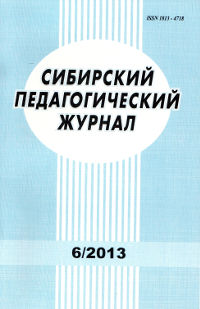HERMENEUTIC PEDAGOGY FOR TEACHING COMPLEX COMMUNICATION IN THE FOREIGN LANGUAGE CLASSROOM
1. Dilthey, V., 2004. Postroenie istoricheskogo mira v naukah o duhe. Sobranie sochinenij: v 6 t. [The construction of the historical world in the human sciences. Collected Works: 6 t.]. Vol. 3. Moscow: Tree kvadrata, 413 p. (in Russ.).
2. Dudina, M. N., 2012. Dialog kak germenevticheskij metod ponimanija teksta [Dialog as hermeneutic method of comprehension]. Nauchnyj dialog [Scientific dialog], 1, pp. 235–246 (in Russ., abstr. in Eng.).
3. Ogurtzov, A. P., 2010. Ponimanie. Novaja filosofskaja jenciklopedija [online]: v 4 t. [Understanding. New encyclopedia of philosophy, 4-book set]. Moscow: Mysl. Available at: http://iph.ras.ru/elib/2365. html (Accessed: 19 February 2016) (in Russ.).
4. Prigozhin, I., Stingers, I., 1986. Porjadok iz khaosa. Novyj dialog cheloveka s prirodoj [Order out of chaos. The new dialogue of man with nature]. Moscow: Progress, 432 p. (in Russ.).
5. Senko, Y. V., 2004. Pedagogicheskaja technologia v germenevticheskom kruge [Educational technology in the hermeneutic circle]. Pedagogica [Pedagogy], 6, pp. 15–23 (in Russ., abstr. in Eng.).
6. Schleiermacher, F. D., 2004. Germenevtika [Hermeneutics]. St. Petersburg: Evropeiskiy Dom, 242 p. (in Russ.).
7. Cromley, J., 2012. Learning to think, learning to learn. Washington, D. C.: National institute for Literacy, 238 p.
8. Lazareva, I. N., 2015. Complex communication in the FL Classroom: Hopes of turn for the better. US-China Foreign Language, 13 (4), pp. 245–252.




